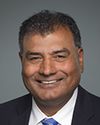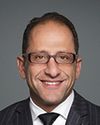Following on that, it's my understanding that when one applies for a TRV, temporary resident visa, the two things they predominantly look for are purpose and travel history. The reason I call that a rejection office is that if the travel history is strong, they are rejected because the purpose isn't strong enough. If the purpose is very strong, they say the travel history isn't there. It seems that the officers in that particular area are looking for a reason to not give a visa, as opposed to getting enough grounds to give a visa.
While sitting here, I just received an application of a person who's been to 41 countries as an athlete of the Olympic team in India. He's a decorated officer in the police force. He applied here. His email is astounding. He's embarrassed. He's never been rejected by anyone. They cite “lack of purpose”, because he's coming to a hockey tournament here.
These are appalling, and we constituent MPs are inundated. In our offices, at least 50% of our time is taken up dealing with these files, sending them back to your offices, and getting inquiries done.
However, we have no internal review process. Are there any plans to do an internal review? Currently, if someone's visa is rejected, such as the one I just mentioned, the only recourse the person has is to go to the Federal Court or reapply.





